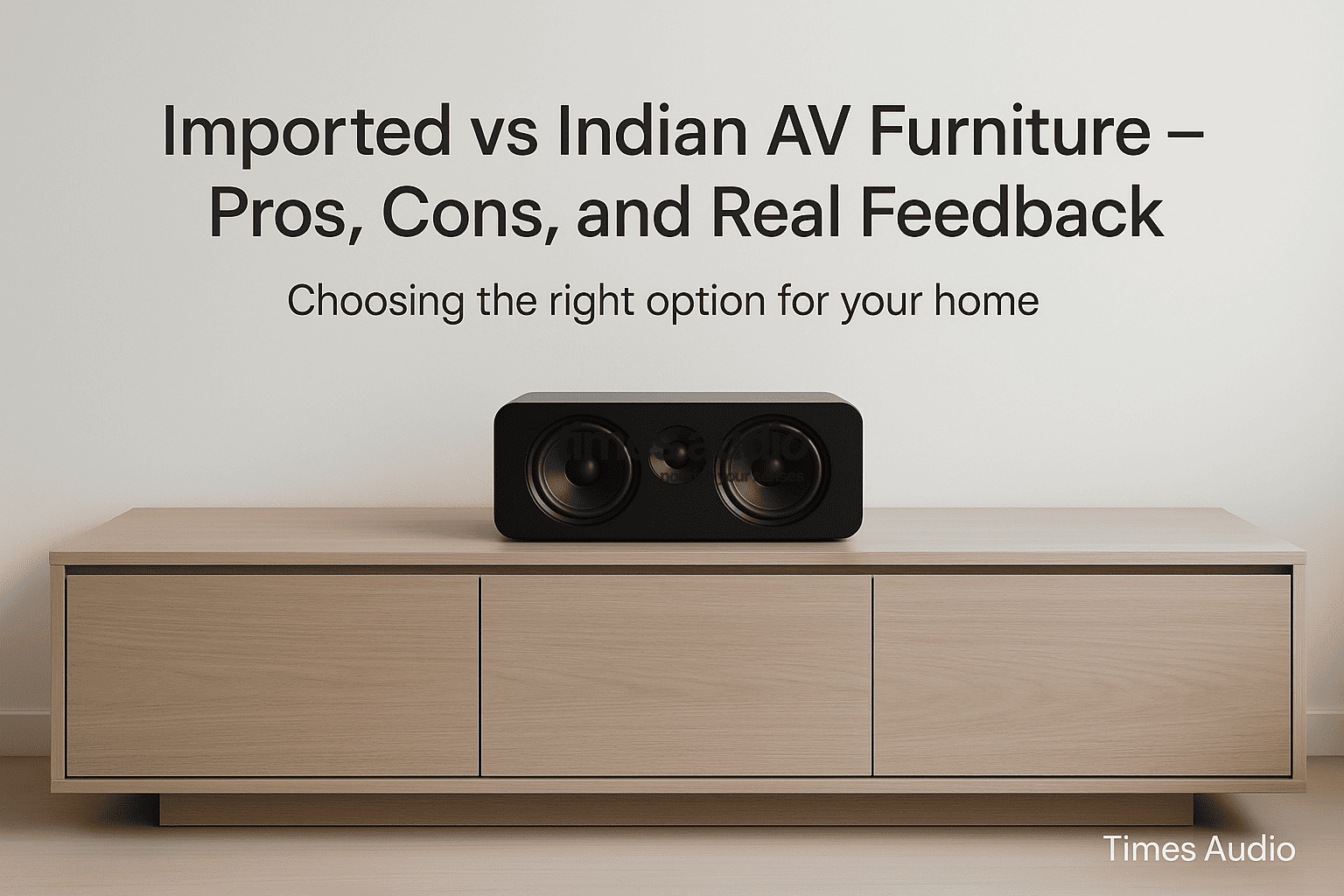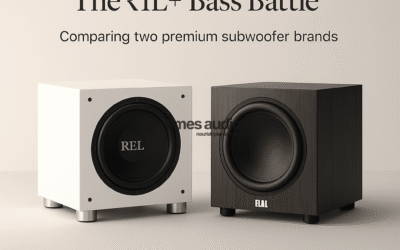At Times Audio, we install serious home theatre systems. We’re not talking about ₹1 lakh kits from marketplaces. We work with homeowners, architects, and interior designers across Gurgaon, Delhi NCR, Noida, and South Delhi who invest ₹10 lakh and above into their audio-visual experiences — systems built around brands like Marantz, Anthem, Bowers & Wilkins, REL, Q Acoustics, and Paradigm.
And one question that comes up in almost every consultation is:
“Should we go for Indian AV furniture or import something?”
Here’s an honest take, based on years of firsthand experience and real client feedback.
What Is AV Furniture, and Why Does It Matter?
AV furniture isn’t decorative. It’s functional.
It holds your amplifier, processor, media players, and even power conditioners.
If poorly built, it overheats equipment, rattles under low-frequency pressure, or gets scratched from basic use.
Good AV furniture must support:
- Weight of high-end amps (some weigh over 25kg)
- Ventilation to prevent overheating
- Wire management without sharp bends or stress
- Vibration control especially when paired with REL or Paradigm subwoofers
Imported AV Furniture – Pros and Cons
Pros
1. Precision Engineering
Brands like Solidsteel (Italy) and Quadraspire (UK) build racks that are not just shelves, but part of the sound. Their designs isolate vibration and improve sonic clarity — especially when using components like Cambridge Audio Edge A or Anthem STR.
2. Long-Term Value
Many imported units last over a decade without sagging, rusting, or wearing down. The finish stays sharp, the screws don’t loosen, and the stability never falters.
3. Aesthetic Consistency
For homes in DLF Golf Links, Vasant Vihar, or Noida Sector 15, where the interior language is minimal and global, these racks match the mood.
Cons
1. Expensive
A Quadraspire XL rack can cost ₹1.5 lakh or more — just for the shelf unit.
2. Limited Availability
Lead times can stretch to 6–8 weeks, and shipping damage (though rare) is a concern.
3. Less Flexibility
Some imported units don’t have the modularity that Indian manufacturers offer — like adjustable shelving for oversized gear.
Indian AV Furniture – Pros and Cons
Pros
1. Custom Dimensions
Need a 3-shelf rack that fits a Marantz SR8015, a PS5, and still hides a power conditioner below? Indian brands like Pulz or AV Shack Custom can build it.
2. Faster Turnaround
Delivery within 10–15 days. Ideal when projects are running on a tight schedule.
3. Budget-Friendly
A well-built local unit might cost ₹30,000–₹60,000 — a third of the imported price.
Cons
1. Build Quality Varies
We’ve seen local units where panels warp, screw threads strip, or laminate peels after a year. This becomes a risk for heavy gear like Denon AVC-X8500HA or McIntosh amps.
2. Less Attention to Acoustics
Most Indian vendors don’t test for vibration control. For clients who use Bowers & Wilkins 702 S3 or Klipsch Reference Premier, this becomes noticeable.
3. Finishing and Detailing
While many Indian units are strong structurally, the finer details — hinges, vents, cable cutouts — can lack polish.
What We Recommend at Times Audio
At https://timesaudio.in, we’ve worked with both imported and Indian AV furniture across dozens of projects in Delhi NCR homes. Here’s our honest recommendation:
If your investment in electronics is ₹15L and above — especially with separates from Anthem, McIntosh, or Marantz Reference Series — go for imported AV furniture. You’ll notice the difference in stability, heat control, and even sonic output.
If your system is between ₹10L–₹15L, and your space needs a custom layout, a well-made Indian unit can be a smart, practical choice — as long as it’s built by a vendor who understands AV needs.
Either way, we always inspect the furniture specs before installation. Ventilation gaps, weight tolerance, vibration resistance — these are non-negotiable for high-performance setups.
Real Feedback from Clients
“We started with an Indian rack but had overheating issues in summer. Upgraded to a Quadraspire — problem solved.” — Client in DLF Phase 2
“Loved the look of imported racks, but we needed space for extra components. Our custom unit worked better for our layout.” — Client in Greater Kailash
“Our Cambridge Edge W amp cracked a shelf in a local unit. Rebuilt it after that mistake.” — Architect from Noida
Final Thoughts
Your AV system is only as strong as the foundation it’s placed on. The furniture isn’t just about looks — it’s a critical part of system performance and longevity.
At Times Audio, we help you choose what’s right based on your gear, home, and lifestyle — not just brand names.
If you’re building a theatre that deserves more than average, we’re happy to guide you.
Visit us at https://timesaudio.in or DM for consultation.






